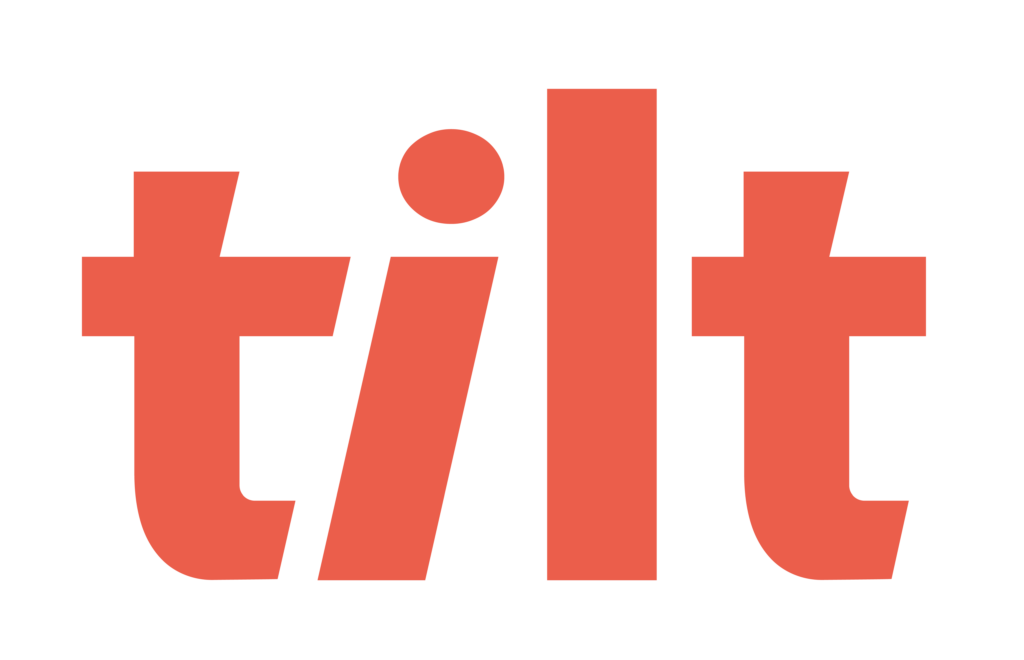For many business leaders today, leave compliance is often perceived as a necessary, but rather inconsequential aspect of HR management.
When perception shapes our reality, however, we run the risk of overlooking real truths that deserve our care and attention.
While it’s true that ensuring compliance with regulations like the Family and Medical Leave Act (FMLA) or the Americans with Disabilities Act (ADA) protects businesses from legal trouble, this view reduces leave compliance to a basic “CYA” (Cover Your “Assets”) approach.
In reality, the impact of leave compliance goes far beyond avoiding fines. It plays a pivotal role in shaping an organization’s culture, employee trust, and overall workplace stability. When leave compliance is treated as a foundational priority, it becomes a key differentiator between organizations that simply survive and those that thrive.
At its core, leave compliance is not just about meeting legal obligations—it’s about creating an environment where employees feel valued, supported, and secure.
Employees are more likely to trust their employer when they know that their rights are protected, and that their leave will be managed fairly and consistently. A single negative leave experience can unravel years of trust-building efforts, leading to disengagement, lower morale, and even turnover.
Conversely, when employees see that their organization is committed to compliant, compassionate leave management, it fosters a deeper sense of loyalty and stability.
Transforming leave compliance from a bureaucratic task into a trust-building opportunity is what separates organizations that merely get by from those that excel.
The High Cost of Poor Leave Compliance
The costs associated with poor leave compliance can be significant, both financially and operationally.
Non-compliance can lead to hefty fines and legal challenges, which not only strain financial resources but can also divert management’s attention from core business functions. For example, a company that fails to adhere to FMLA regulations may face lawsuits that could result in settlements far exceeding the cost of proper leave management systems.
And these missteps aren’t always intentional or obvious. In fact, unintentional compliance violations are more common than you think. The U.S. Equal Employment Opportunity Commission reports that they secured more than $404 million in monetary benefits for individuals within one year, based on equal opportunity compliance violations alone.
With leave of absence being a hotbed for discrimination potential, that’s a lot of assets organizations should be frantically trying to protect.
Additionally, inefficient leave tracking can create administrative burdens, leading to increased labor costs and decreased productivity as HR teams scramble to address compliance issues instead of focusing on strategic initiatives.
Beyond the tangible costs, there are also intangible repercussions that can be just as damaging. Employees who perceive your leave policies as arbitrary or unfair are likely to experience a drop in morale, leading to disengagement and increased turnover rates.
Perception shapes reality, after all.
The ripple effect of a poor leave experience can also disrupt team dynamics, as colleagues may need to cover for absent employees, leading to frustration and resentment. This can create a toxic workplace environment that hinders collaboration and innovation, ultimately affecting the organization’s bottom line.
The need for reliable leave compliance is therefore not just about financial savings, but also about preserving a positive organizational culture and employee satisfaction.
The Trust Factor: How Leave Compliance Builds Organizational Stability
Research from MIT Sloan shows that trust is a critical driver of engagement. Trusting employees are 260% more motivated to work, have 41% lower rates of absenteeism, and are 50% less likely to look for another job.
If that weren’t enough, MIT’s research also shows that roughly 1 in 4 workers don’t trust their employer, while most employers overestimate their workforce’s trust level by almost 40%.
Management might view themselves as trustworthy, but if their employers don’t perceive that to be true, well, that’s a recipe for organizational instability.
Leave compliance plays a crucial role in establishing and maintaining the trust between employer and employee.
When employees feel confident that their leave requests will be handled in accordance with the law, they are more likely to engage with their work and remain committed to their employer. Clear communication about leave policies, coupled with a transparent and consistent application of those policies, signals to employees that their well-being is a priority. This transparency fosters a culture of trust, where employees feel safe to express their needs without fear of repercussion or discrimination.
When employees experience delays, confusion, or perceived unfairness in how their leave requests are managed, it can create feelings of betrayal and resentment.
One universal truth that extends beyond the realm of the workplace is that once trust is lost it is near impossible to regain, making it essential for organizations to prioritize leave compliance as a way to not only meet legal obligations but also to reinforce a culture of mutual respect and support.
The Role of Leave Management in Creating a Strong Workplace Foundation
Reliable leave compliance is an essential component of operational stability within an organization, and effective leave management is the transformational driver. A solid leave process serves as a foundation upon which employee confidence and organizational effectiveness can thrive.
By ensuring that leave policies are compliant and clearly communicated, companies can reduce the ramifications that often arise from mismanaged leave situations. This predictability helps establish a smoother workflow, allowing teams to plan for absences without the anxiety of last-minute adjustments or potential legal repercussions.
Tilt’s leave management solution exemplifies how technology can streamline compliance and enhance operational stability.
By automating leave tracking, providing HR teams with clear insights into every aspect of the leave journey, and providing personalized employee leave plans consistently and compliantly, Tilt’s platform reduces the risks associated with ineffective or manual leave management processes.
How Reliable Leave Compliance Drives Organizational Performance
When your organization reliably delivers a compliant leave experience to employees, it can then operate from a stable foundation. The next step is then leveraging that foundation to drive operational performance and boost employee satisfaction.
In this way, incorporating a modern approach to leave management should be viewed as a strategic advantage, improving employee retention, satisfaction, and productivity.
A recent Tilt survey of HR leaders found that 75% of employees returning from leave that had been managed by a vendor (vs. a spreadsheet) hit their OKRs, compared to an average of roughly 60% (in non-sales roles) overall.
15% better performance after taking a leave of absence is quite the transformation indeed.
A compliant leave system that is well-managed and effectively administered can significantly improve the employee experience. When employees feel supported during their leave, they are more likely to return to work fully engaged, reducing turnover rates and fostering a positive work environment that encourages high performance.
The same Tilt survey found that employers who used a vendor to manage leave saw another 15% boost in employee retention post-leave than those HR teams relying on spreadsheets and manual processes.
Tilt’s solution for leave management goes beyond compliance; it positions organizations to proactively address employee needs and identify trends that may indicate burnout or disengagement.
By analyzing leave data, HR teams can make informed decisions about resource allocation and employee support, preventing issues before they escalate. This proactive approach not only enhances organizational resilience but also empowers employees to thrive within the company.
In doing so, organizations can transition from being merely stable to truly excelling, creating a workplace that not only meets compliance standards but also drives engagement, innovation, and overall success.
Leave Management as a Differentiator for HR
One of the biggest challenges HR departments face is managing unexpected leaves, such as sudden illness or family emergencies.
Without the right systems in place, these scenarios can create chaos within an organization. Automated leave management systems improve HR’s ability to manage the unexpected and allow teams to track leave balances in real-time, adjust workloads seamlessly, and make data-driven decisions about staffing needs.
This ability to handle the unexpected is a major differentiator for HR departments that want to build organizational resilience.
Modern leave management tools, like Tilt which integrates with platforms such as Workday, are game changers for HR departments. These systems automate processes like leave requests, approvals, and keep compliance concerns in check, reducing the manual workload for HR teams and minimizing the risk of errors.
Automated systems also enable HR to have a clear, real-time view of who is available and when, allowing for faster adjustments to employee schedules or project teams. By eliminating time-consuming manual processes, HR can focus on more strategic initiatives that drive organizational resilience.
Leave management systems that are fully integrated into the larger HR tech ecosystem provide even more value. For example, a two-way API integration between Tilt and Workday allows for seamless data transfer between leave management and other HR functions, such as payroll, performance management, and workforce planning.
This integration ensures that when leave is approved, it automatically updates employee availability, pay calculations, and team workloads. Real-time data and visibility enable HR and managers to make quick, informed decisions, keeping the organization running smoothly even during staff absences.
Transforming organizational resiliency doesn’t have to be hard for HR teams, it just requires modern tools to meet modern business demands.
How HR is Creating a Culture of Trust and Flexibility with Leave
Effective leave management is crucial for building trust and employee engagement, key pillars of organizational resilience.
When employees trust that their leave will be handled smoothly and fairly, they are more likely to remain engaged and loyal to the organization. On the other hand, of course, is that poorly managed leave can lead to frustration and disengagement, eroding the employee-employer relationship and increasing turnover.
Prioritizing leave management also supports employee well-being, reducing burnout and turnover.
A recent survey by Tilt revealed that HR leaders who use a vendor to manage leaves of absence notice a 15% boost in employee retention post-leave compared to organizations relying on spreadsheets or managing them manually.
By fostering a culture that values an employee’s time when life happens hardest, and offers flexible work arrangements, HR creates an environment where employees can balance work and life needs, even during disruptions.
This flexibility not only improves productivity but also enables organizations to adapt quickly to change, making them more resilient in the long run.
How Better Leave Management Drives Organizational Resilience
Effective leave management is a cornerstone of organizational resilience, and platforms like Tilt make this process seamless by automating data transfer, reducing human error, and providing empathetic human support to employees.
With Tilt’s integration into broader HR systems like Workday, leave data flows effortlessly between systems to ensure accurate tracking of leave balances, pay calculations, and employee availability.
By reducing administrative burdens, HR teams can focus on strategic initiatives, while employees benefit from reliable, accurate management of their leave, building trust and strengthening employee engagement.
Tilt also plays a crucial role in mitigating compliance risks.
With constantly changing regulations around family and medical leave (among other policies to keep track of), it’s easy for organizations to make costly mistakes. Tilt ensures compliance by automatically updating leave policies in accordance with local and federal laws, minimizing the risk of fines, legal issues, or employee grievances.
This proactive approach to managing leave compliance not only reduces legal exposure but also enhances the organization’s reputation for fairness and ethical workforce management, a key component of long-term resilience.
Using Tilt to manage leave also helps organizations maintain employee satisfaction and adaptability. When employees trust that their leave will be handled efficiently, they are more likely to feel supported and remain loyal, reducing turnover and fostering a stable workforce.
Tilt gives HR teams a holistic window into all leaves across the organization and allows managers to plan more effectively around absences, helping organizations remain agile in the face of unexpected challenges.
Tilt gives HR the power to position themselves as a strategic driver of organizational resilience transformation.
Tilt is leading the charge in all things leave of absence management through easy-to-use tech and human touch. Since 2017, our proprietary platform and Empathy Warriors have been helping customers make leave not suck by eliminating administrative burdens, keeping companies compliant, and providing a truly positive and supportive leave of absence experience for their people.







